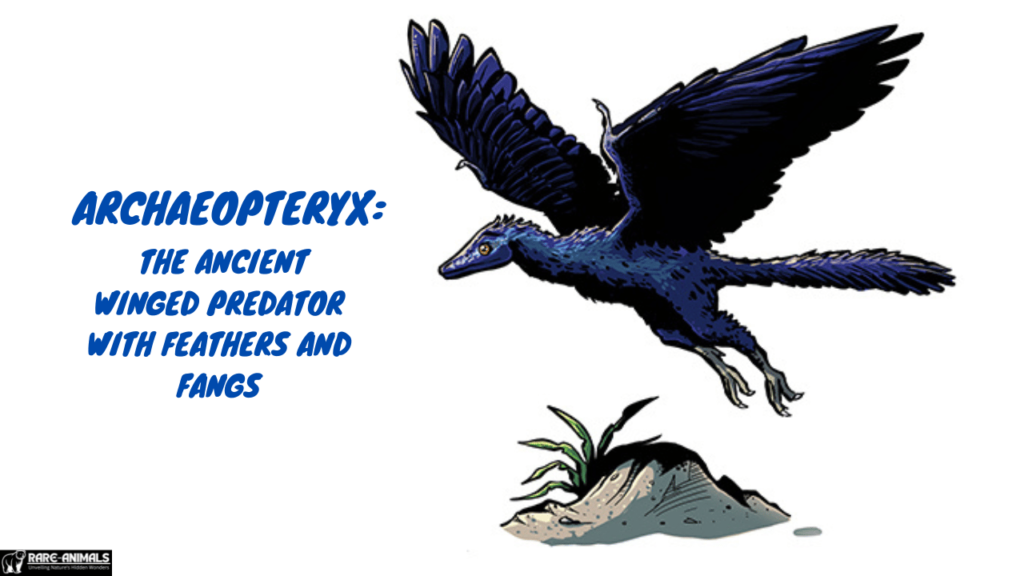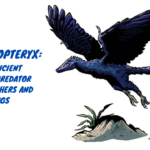Archaeopteryx, often referred to as the “first bird,” is one of the most fascinating creatures from the Jurassic period. This feathered predator, possessing both avian and reptilian traits, has significantly contributed to our understanding of the evolution of birds from dinosaurs.
In this article, we will explore the incredible world of Archaeopteryx, its anatomy, habitat, evolutionary significance, and the ongoing debates surrounding its role in the history of life on Earth.
What is Archaeopteryx?
Archaeopteryx lithographica is a genus of bird-like dinosaurs that lived approximately 150 million years ago during the Late Jurassic period.
First discovered in 1861 in Germany, this ancient creature has intrigued paleontologists due to its unique blend of avian and reptilian features.
Key Characteristics:
- Feathers: Archaeopteryx had fully developed feathers, similar to modern birds, indicating its capability of gliding or powered flight.
- Teeth and Clawed Wings: Unlike modern birds, it had sharp teeth and three-fingered claws on its wings, resembling small theropod dinosaurs.
- Bony Tail: A long, bony tail, distinct from the pygostyle found in birds today.
- Size and Weight: It was about the size of a raven, weighing around 0.8–1 kg (1.8–2.2 lbs).
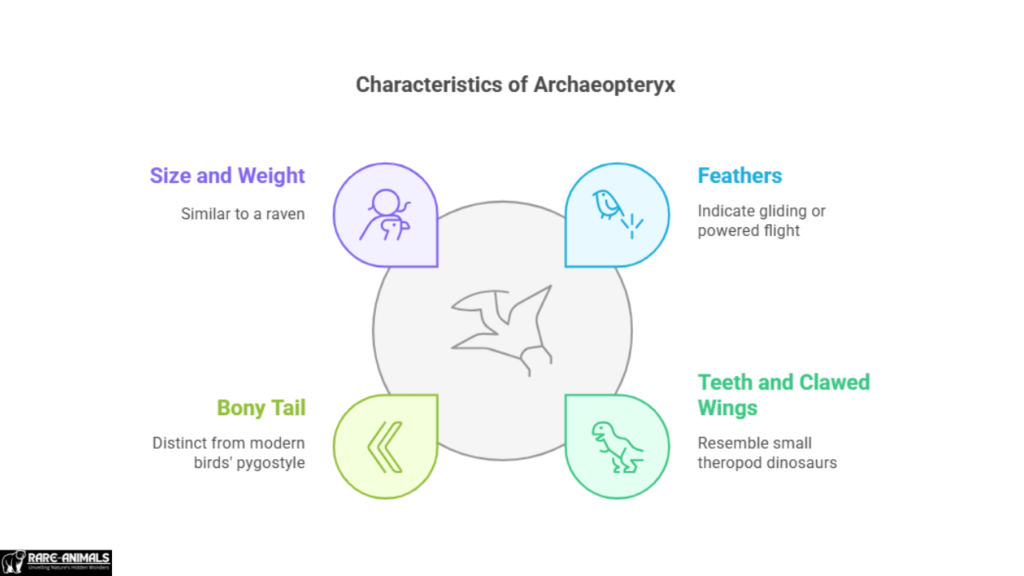
The Discovery and Fossil Evidence
The first Archaeopteryx fossil was discovered in the Solnhofen limestone of Bavaria, Germany. This region, known for its exceptionally well-preserved fossils, provided critical insights into the anatomy and lifestyle of this prehistoric creature.
Since the initial discovery, several other fossils have been found, each offering new clues about its evolutionary significance.
Evolutionary Significance: The Link Between Dinosaurs and Birds
Archaeopteryx serves as a crucial transitional fossil, bridging the gap between non-avian dinosaurs and birds.
Its discovery played a pivotal role in supporting Charles Darwin’s theory of evolution, offering concrete evidence that birds evolved from theropod dinosaurs.
How Does Archaeopteryx Link to Modern Birds?
- Feather Structure: Similar to those of modern birds, suggesting insulation and possible flight capabilities.
- Furcula (Wishbone): A key skeletal feature found in both birds and some theropods, aiding in flight mechanics.
- Digit Arrangement: The three-fingered hand structure aligns with small theropod dinosaurs like Velociraptor.
Was Archaeopteryx Capable of Flight?
The debate over whether Archaeopteryx could fly has been ongoing for decades. Several aspects suggest it had some level of aerial ability:
- Asymmetrical Feathers: Typically associated with powered flight.
- Lightweight Skeleton: Aids in reducing body weight for lift.
- Wing Morphology: Shows adaptations for gliding or flapping flight.
However, some scientists argue that its flight abilities were limited compared to modern birds. Studies suggest it may have been a glider rather than an active flyer.
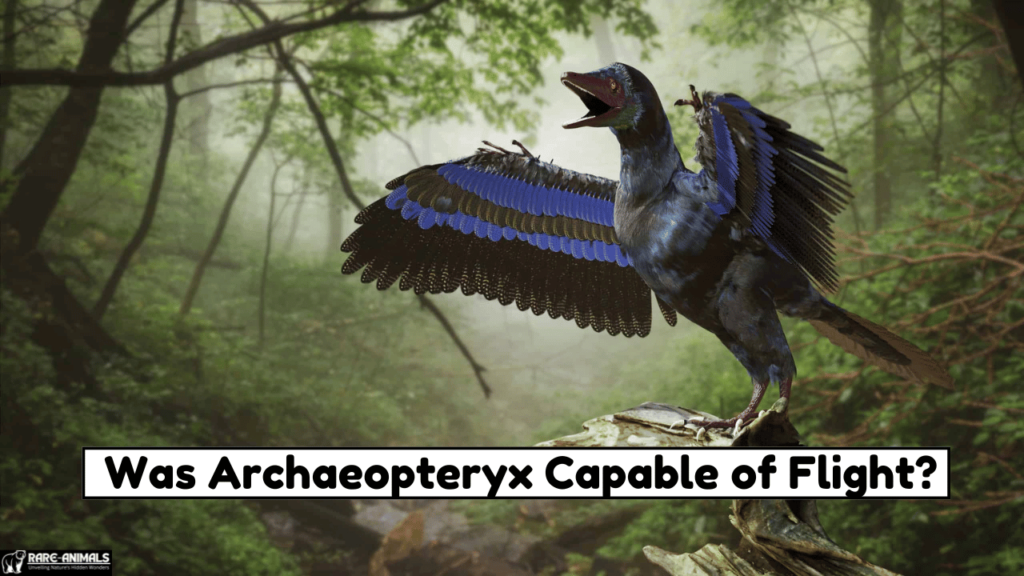
Habitat and Lifestyle
Archaeopteryx likely lived in a subtropical archipelago, similar to today’s Bahamas. Fossil evidence suggests it inhabited coastal environments, hunting small prey such as insects, lizards, and even small mammals.
Diet and Hunting Techniques
- Carnivorous Diet: Evidence from its teeth and claws indicates it was a predator.
- Ambush Hunting: Likely used its sharp teeth to catch and consume small vertebrates.
- Possible Arboreal Behavior: Some theories suggest it may have lived in trees, aiding in its ability to glide or launch itself into the air.
The Controversy: Bird or Dinosaur?
While Archaeopteryx is widely considered a transitional form, there are alternative theories regarding its classification.
- Traditional View: It represents the earliest known bird.
- Alternative Theory: Some researchers argue it is more closely related to small theropods, placing it outside the direct lineage of modern birds.
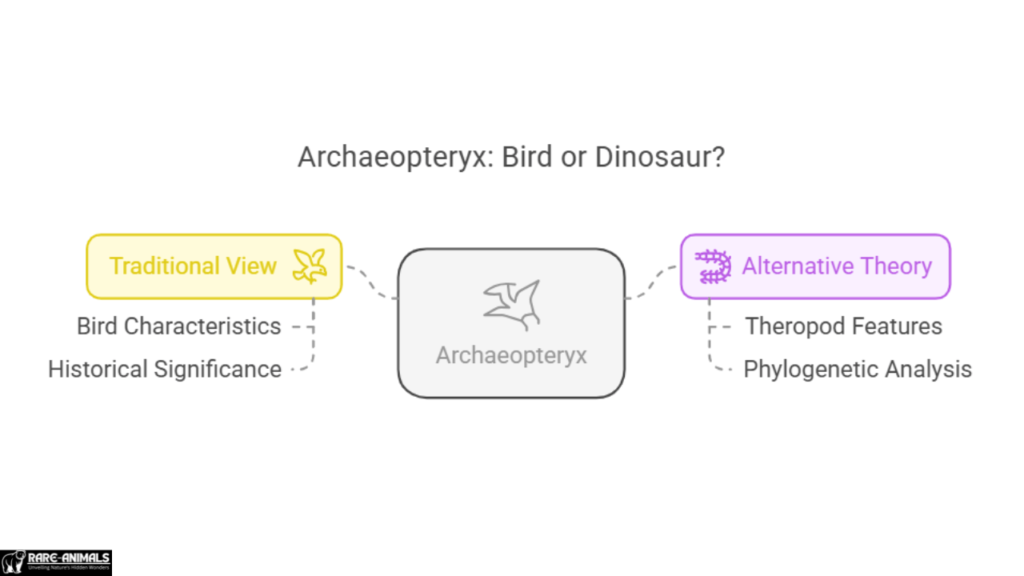
Why Archaeopteryx Matters Today
Understanding Archaeopteryx helps scientists piece together the evolutionary puzzle of flight and avian ancestry. Its discovery and subsequent studies highlight the importance of transitional fossils in evolutionary biology.
Conservation and Scientific Research
- Preservation of Fossils: Ongoing efforts ensure these invaluable fossils remain protected.
- Technological Advances: Modern imaging techniques, such as CT scans, provide deeper insights into its skeletal structure and potential flight capabilities.
- Public Engagement: Museums and educational programs continue to showcase Archaeopteryx as a key player in evolutionary history.
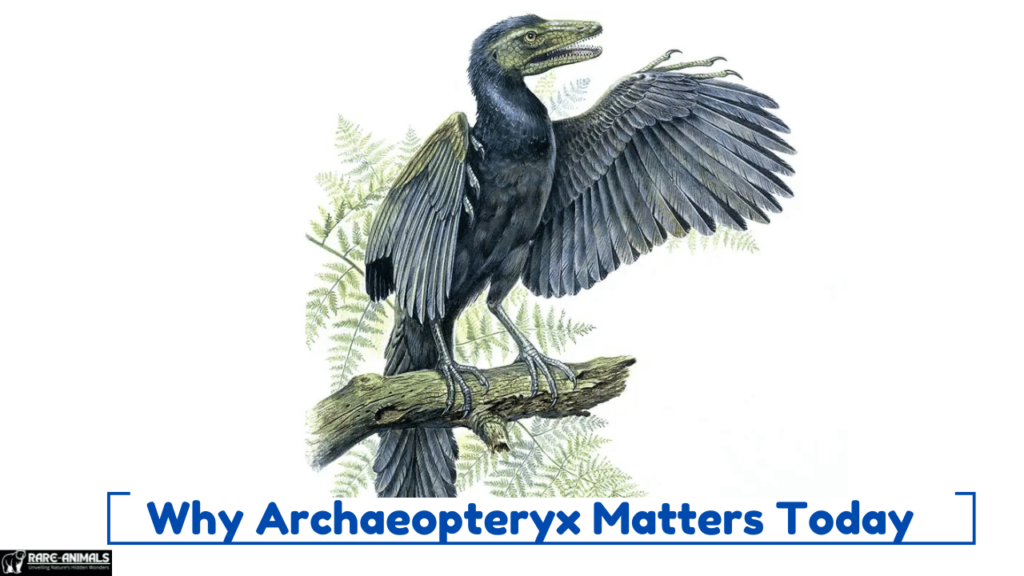
Conclusion
Archaeopteryx stands as one of the most extraordinary discoveries in paleontology, offering crucial evidence for the link between dinosaurs and modern birds.
With each new fossil and study, our understanding of this prehistoric predator deepens, revealing the complexity of evolutionary transitions. Whether viewed as the first bird or a feathered dinosaur, its significance remains undisputed.
FAQs
1. Why is Archaeopteryx considered a missing link?
Archaeopteryx bridges the gap between dinosaurs and birds, showcasing features of both groups.
2. Could Archaeopteryx actually fly?
It likely had some flying capabilities, but evidence suggests it was more of a glider than a strong flyer.
3. Where were Archaeopteryx fossils found?
Most fossils have been discovered in the Solnhofen limestone deposits in Bavaria, Germany.
4. How does Archaeopteryx compare to modern birds?
It had feathers and a wishbone like modern birds but retained teeth, claws, and a long tail, linking it to theropod dinosaurs.
5. What did Archaeopteryx eat?
It was a carnivore, preying on small animals, insects, and possibly fish.
Archaeopteryx remains an enduring symbol of evolution, showcasing the intricate transition from dinosaurs to birds. Its fossils continue to captivate scientists and enthusiasts alike, providing invaluable insights into the past and the origins of avian flight.

Alveena is an experienced content writer with a knack for crafting engaging and insightful pieces. She thrives on breaking down complex ideas and presenting them as clear, captivating content that resonates with readers.

